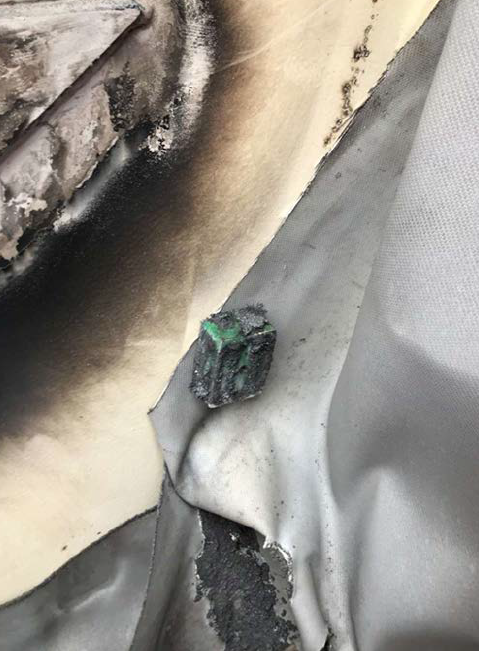- IP Code: Mandatory Code enters into force on 1 July. Make sure your company is up to speed with the changes.
- Early Bird tickets available for the IMCA Global Summit 2024. 3-4 December, Utrecht, Netherlands. Members can save £400.
- Discover how we are helping Members reduce emissions: Explore the ProjectGHG hub now.
- Now booking. Join the Lifting and Rigging community at our Technical Seminar in Amsterdam. Thursday 12 September 2024
- Now booking. Underwater Ship Husbandry Seminar. 10 October 2024, Singapore.
Near miss: dropped magnet during dry docking
What happened?
There was a dropped object near miss incident involving a magnet which was used by subcontractors during hot work operations. The incident occurred during a dry docking. Part of the scope of work involved hot work, grinding and gouging, to be carried out from scaffolding put up against the ships funnel. As a dropped object prevention measure, the scaffolding had been partially enclosed on three sides, with the fourth side being against the funnel.
During an inspection of ongoing work, it was noted that sparks were escaping the fire protection and it was requested that the gap in the protection was closed. It was at this time, while the fire protection was being adjusted, that an object fell from the scaffold to the dock; a drop of 32m. The object was later identified as being a magnet which had been used to hold fire protection against the ships funnel. There was no damage and no injuries.

What went wrong? What were the causes?
- The worksite was directly above the dock and no barriers had been placed on the dock to prevent workers from gaining access to the area directly below the worksite;
- Sub-contractors were using magnets on site and at height without any secondary retention in place. This was not known to the vessel crew;
- The magnets in use had been engineered to allow fitting of eyelets for secondary retention, but the fitting of secondary retention eyelets had not been considered by the shipyard.



What lessons learned
- Our member noted that there was anecdotal evidence that magnets are routinely used in shipyards for securing against the ship superstructure. This should be taken into account on future worksites;
- Ensure that all equipment being used at height is identified and suitable dropped object prevention controls are in place.
Members may wish to refer to:
- Guidance on safety in shipyards (IMCA M 221, IMCA HSSE 032)
- Dropped object near-miss – Unsecured plastic box fell from load being lifted by mobile crane
- Unsecured object fell and injured crewman
- Further safety incidents including the word ‘retention‘
Safety Event
Published: 16 July 2019
Download: IMCA SF 17/19
IMCA Safety Flashes
Submit a Report
IMCA Safety Flashes summarise key safety matters and incidents, allowing lessons to be more easily learnt for the benefit of all. The effectiveness of the IMCA Safety Flash system depends on Members sharing information and so avoiding repeat incidents. Please consider adding [email protected] to your internal distribution list for safety alerts or manually submitting information on incidents you consider may be relevant. All information is anonymised or sanitised, as appropriate.
IMCA’s store terms and conditions (https://www.imca-int.com/legal-notices/terms/) apply to all downloads from IMCA’s website, including this document.
IMCA makes every effort to ensure the accuracy and reliability of the data contained in the documents it publishes, but IMCA shall not be liable for any guidance and/or recommendation and/or statement herein contained. The information contained in this document does not fulfil or replace any individual’s or Member's legal, regulatory or other duties or obligations in respect of their operations. Individuals and Members remain solely responsible for the safe, lawful and proper conduct of their operations.
